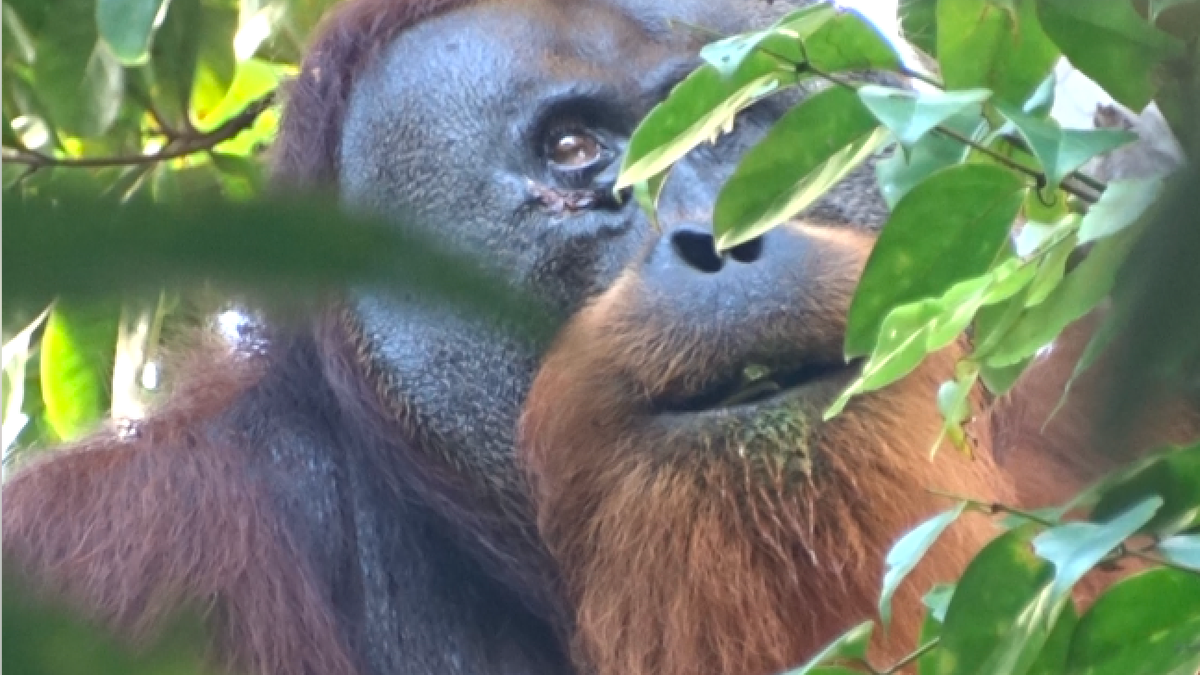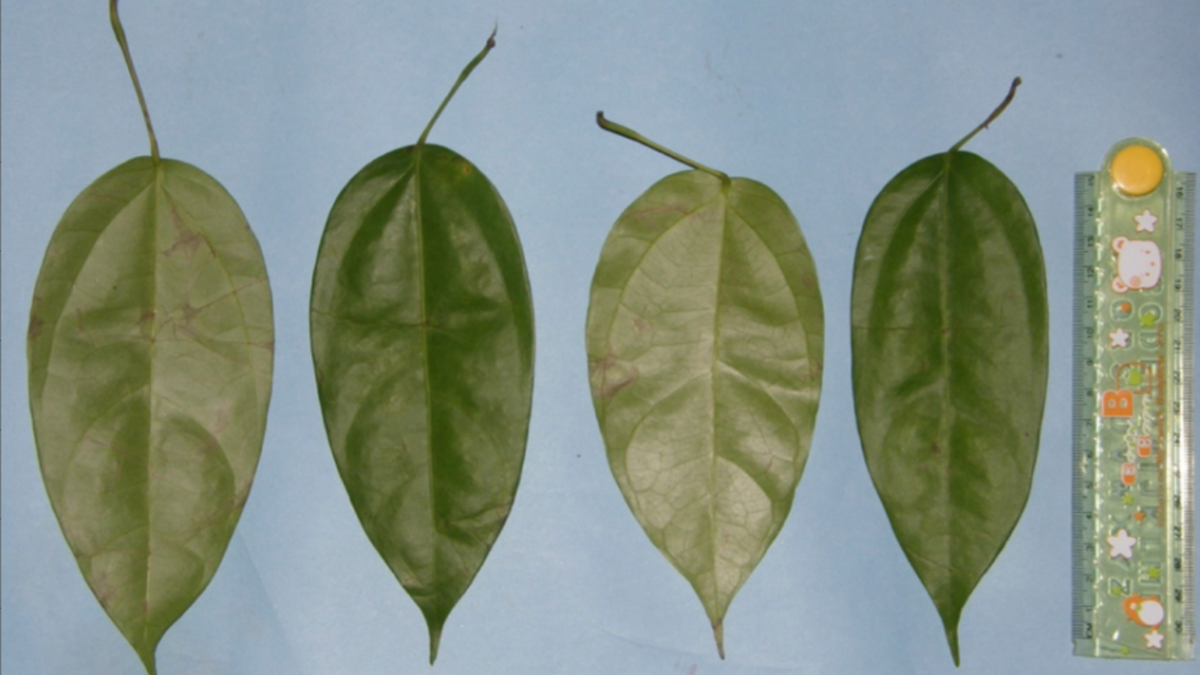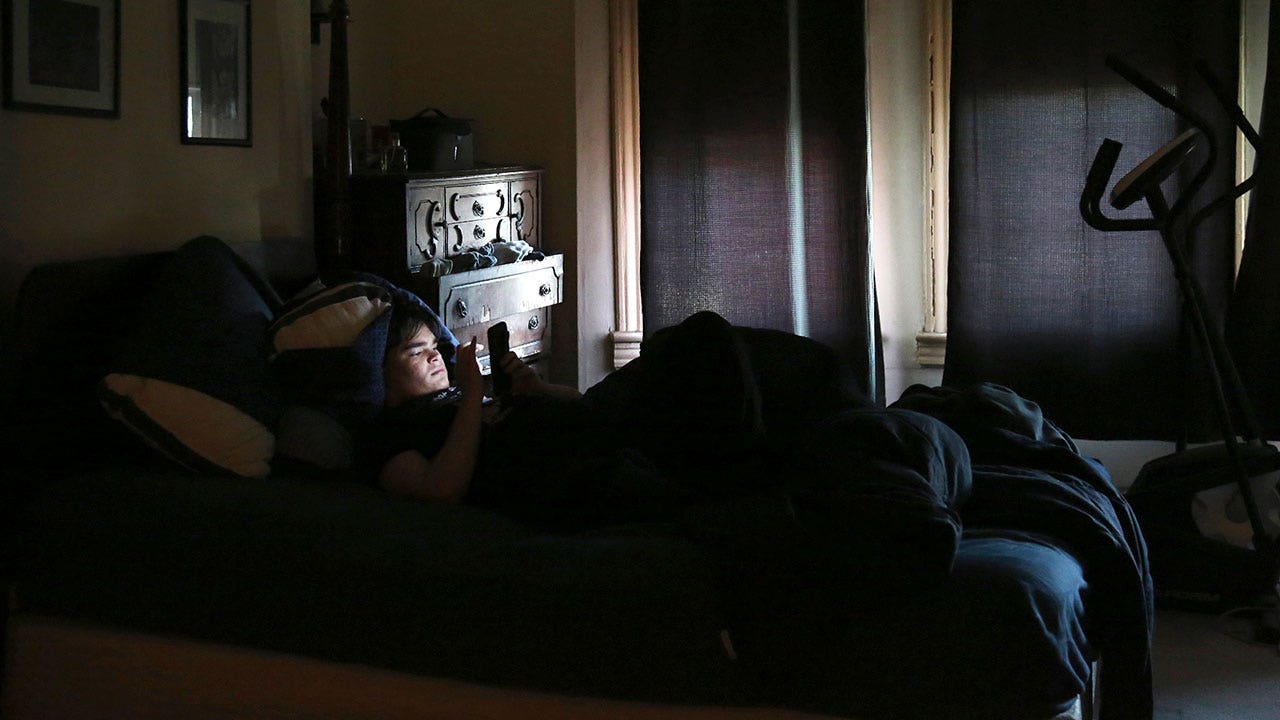Health
Ronnie Cummins, Scourge of Genetically Modified Food, Dies at 76

Ronnie Cummins, a ponytailed activist who became one of the country’s leading advocates for organic food and a leading critic of genetically modified food, died on April 26 in San Miguel de Allende, Mexico, where he lived and worked part-time. He was 76.
Rose Welch, his wife and partner in starting the Organic Consumers Association, an advocacy and informational organization, said his death, which was not widely reported at the time, was caused by bone and lymph cancer.
Mr. Cummins was a lifelong activist and protester, beginning with his opposing the Vietnam War and nuclear power. He settled on organic food activism in the 1990s after he was hired as a director of the Pure Food Campaign, a lobbying group that sought to broaden awareness of the dangers of genetically engineered food while pushing for responsible labeling and government testing.
Mr. Cummins worked in the field for the campaign, raising alarm at rallies and supermarkets about the perils of foods using genetically modified ingredients. He handed out leaflets, wrote opinion articles and answered consumers’ questions as a campaign spokesman.
He also worked for the Beyond Beef campaign, aimed at reducing beef consumption and promoting safer methods of cattle production. Both campaigns were founded by the environmental activist and social theorist Jeremy Rifkin.
Mr. Cummins “was a tough guy who could be an activist and also step back and do the intellectual homework behind what we were doing,” Mr. Rifkin said in a phone interview.
“Too often activists burn out after starting out with high expectations,” he added. “But Ronnie could write, research, reflect and be open to all points of view.”
One of Mr. Cummins’s frequent targets was recombinant bovine somatotropin, or bovine growth hormone, a genetically engineered hormone, produced by Monsanto, that stimulates milk production in cows.
On the first day that farmers were allowed to sell milk from cows injected with the hormone, in 1994, Mr. Cummins told The Associated Press that “if we don’t slow down the technology of change with genetically engineered additives, we will be making a very major mistake in terms of human health, animal health and the survival of family farms.”
He continued to rail about milk produced by hormone-treated cows after he and Ms. Welch started the Organic Consumers Association, based in Finland, Minn., in 1998.
“Recombinant bovine growth hormone is bad for dairy cows, literally burning them out in three or four years, causing terrible physical stress and a long list of medical problems including reproductive complications,” Mr. Cummins wrote in The Fresno Bee in 2008.
He relished battling with major brands. In 2001, he raised doubt about Starbucks’s promise not to use milk products with the hormone by asking to see its promise in writing. (The company eventually complied in 2007.) He warned about a “sneak attack engineered by the likes of Kraft, Dean Foods and Smucker’s.” To pressure companies using modified beet sugar, he threatened a protest against Hershey.
Though there are unresolved questions about the effect of genetically modified organisms on biodiversity, there is a near-universal consensus among scientists that genetically modified foods are safe to eat.
Most consumers do not share that view, however, a skepticism due in large part to the efforts of activists like Mr. Cummins.
The safety of genetically modified food “is like global climate change, where 99 percent of scientists believe in it,” Pamela Ronald, a plant pathology professor at the University of California, Davis, told The Roanoke Times in 2013.
She added, “You have scientists around the world who say genetically engineered crops are safe to eat — and then you have Ronnie Cummins.”
Mr. Cummins was born Adrian Alton Abel on Oct. 28, 1946, in Jefferson, Tex., about 20 miles from the Louisiana border. His father, Jack, was an accountant for Gulf Oil in Port Arthur, Texas, in the heart of the state’s oil industry. His mother, Elise (Stout) Abel, was a homemaker who died by suicide in 1951.
In his 20s, Adrian changed his name to Ronnie Cummins, the name of a boy who was also born in 1946 and who died in 1954. Ms. Welch said he changed his name because he feared reprisals from the Ku Klux Klan for his antiwar activities at Rice University in Houston, where he had majored in English and philosophy and graduated with a bachelor’s degree in 1969.
Ms. Welch said she did not know why her husband took the Cummins boy’s name in particular. She said he told her that he did not have a criminal record that he was seeking to hide with a new identity. His brother, Jack Abel Jr., said by phone that the story behind the name change “is so personal I can’t share it.”
In addition to his wife and brother, Mr. Cummins is survived by his son, Adrian Cummins Welch; and his sisters, Molly Travis and Bonnie Abel.
Adrian grew up among refineries and later recalled catching fish polluted by oil. But he also spent idyllic summers on his maternal grandparents’ farm, where he took care of animals and gathered eggs.
“My life experience has taught me that money rules and power corrupts, and that putting profits before people and environmental health is not only wrong but deadly,” he wrote in his book “Grassroots Rising: A Call to Action on Climate, Farming, Food and Green New Deal” (2020). “Organized grass-roots power can make a big difference,” he added, “whether we’re talking about public consciousness, marketplace pressure or politics and public policy.”
As a career, activism didn’t pay the bills, so he earned a living over the years as a newsstand owner at the University of Minnesota, the director of a food co-op in Burnsdale, Minn., outside Minneapolis, and a house painter. Ms. Welch waited tables.
“He was pretty much a hippie,” she said in a phone interview.
Both went to work for Mr. Rifkin in the 1990s, Mr. Cummins as a director, Ms. Welch as a campaign manager. They left to start the Organic Consumers Association, which supports enforcement of the U.S. Department of Agriculture’s organic food standards, produces educational material for organic consumers and businesses, and encourages public pressure campaigns on organic food issues.
The “hippie” was finally earning a real salary — $112,900 in 2021.
The O.C.A. has spun off two organizations: the Mexico-based Via Orgánica, an agroecology farm school and research center, in 2009, and, in 2014, Regeneration International, which advances ways to develop farming practices that rebuild degraded soil.
In the view of André Leu, the international director of Regeneration International, Mr. Cummins had stood up to “the powerful elite who were monopolizing power and wealth” and were “undermining democracy, fair wages, healthy food, peace, the climate, and the environment.”
A longtime goal of Mr. Cummins’s was for the government to require labeling on genetically modified food. He fought for ballot initiatives in several states and won his first major victory in Vermont, in 2014, when it became the first state to pass a labeling law.
Faced with the prospect of a patchwork of state laws, Congress passed a sweeping federal labeling law in 2016.
But Mr. Cummins did not consider it a victory.
The law, which superseded the tougher Vermont legislation, gave companies the option of using an icon or a scannable QR code that would direct consumers to a website, instead of having to spell out the information on the package. And some foods, like highly refined sugars and oils, were exempt from the labeling requirement.
Mr. Cummins, in an article on his website, called brands like Organic Valley and Stonyfield Farms “organic traitors” and accused the Grocery Manufacturers Association, the Whole Foods supermarket chain “and a cabal of sellout, nonprofit organizations” of surrendering “to Monsanto and a corporate agribusiness” by backing the legislation.
“In other words business as usual,” he added, then used a buzzword for genetically modified products — “Shut up and eat your Frankenfoods.”
Sheelagh McNeill contributed research.

Health
Orangutan in Indonesian rainforest treats own facial wound, say researchers: ‘Appeared intentional’

An orangutan in a protected Indonesian rainforest site who sustained a facial wound treated the injury himself, according to a study published in the journal Scientific Reports earlier this month.
The male primate chewed the leaves of a plant known for its anti-inflammatory, antibacterial and pain-relieving properties — then applied a paste he made from the chewed leaves to his facial wound, according to the study.
The researchers — from the Max Planck Institute of Animal Behavior in Germany and Universitas Nasional in Indonesia — observed the orangutan, named Rakus, over the course of several weeks in the summer of 2022.
GORILLA, JUST 4 MONTHS OLD, DELIGHTS ZOO VISITORS WITH FUNNY FACES: ‘VERY HAPPY’
His wound closed within five days, he noted.
Less than a month later, it appeared to be fully healed with a barely visible scar, according to the published report.
An orangutan that sustained a facial wound, shown on the left, treated it himself, according to a study published in the journal Scientific Reports earlier this month. In the image on the right, his scar is just barely noticeable. (Armas Fitra & Safruddin & TNGL & KLHK & MPI & UNAS & YEL)
This is the first observed case of active wound treatment with a “known biologically active plant substance” applied by a male Sumatran orangutan in the wild.
“He began chewing the leaves without swallowing them and using his fingers to apply the plant juice from his mouth directly onto his facial wound,” the researchers noted in their published study.
“This behavior was repeated several times.”
‘KITTENS’ DROPPED OFF AT ARIZONA HUMANE SOCIETY TURNED OUT TO BE SOMETHING ELSE
“Rakus then smeared the entire wound with the plant pulp until the red flesh was fully covered with the green leaf material. He then continued feeding on this plant,” they continued.
The orangutan was observed at the Suaq Balimbing research site in Indonesia.
It is a rainforest area that is home to approximately 150 critically endangered Sumatran orangutans, according to a news release.
“The behavior of the Sumatran flanged male orangutan reported here appeared to be intentional,” the researchers wrote.
“The entire process took a considerable amount of time.”
The study authors said the animal’s facial wound likely occurred during a fight with a neighboring male.
TIKTOK TRENDING QUESTION ABOUT ‘BEING STUCK IN A FOREST’ WITH ‘A MAN OR A BEAR’ YIELDS STRATEGIC TIPS
Isabelle Laumer, a primatologist and cognitive biologist at the Max Planck Institute of Animal Behavior in Germany — one of the lead study authors — said in an email to Fox News Digital that the primate used a climbing plant called Fibraurea tinctoria.
The plant is known for its analgesic effects and is used in traditional medicine to treat conditions such as malaria.`
When asked how Rakus knew to use that plant to treat his own wound, Laumer replied, “It is possible that wound treatment with Fibraurea tinctoria emerges through accidental individual innovation.”
She added, “Individuals may accidentally touch their wounds while feeding on Fibraurea tinctoria and thus unintentionally apply the plant’s juice to their wounds … As Fibraurea tinctoria has potent analgesic effects, Rakus may have felt an immediate pain release, causing him to repeat the behavior several times and subsequently apply solid plant matter.”
UTAH CAT ACCIDENTALLY SHIPPED IN AN AMAZON RETURN BOX, FOUND 650 MILES FROM HOME BY WAREHOUSE WORKER
Rakus was not born at the research site, Laumer said.
Male orangutans typically disperse over wide distances when they reach puberty to establish a new home in another area, the expert noted.
“It’s possible that orangutans at his native area showed the behavior,” Laumer said.

Dr. Isabelle Laumer, a primatologist and cognitive biologist at the Max Planck Institute of Animal Behavior in Germany, was one of the lead study authors. (Alice Auersperg)
Similar types of self-treatment have been reported in the past with other primates.
Great apes have reportedly ingested certain plants to treat parasite infections and rubbed plant material on their skin to treat sore muscles, the researchers noted.
“Maybe we can learn something about human medicine from them.”
A group of chimpanzees in Gabon was also observed applying insects to wounds, although “the efficiency of this behavior is still unknown,” according to a news release.
These types of observations could help humans with treating potential health conditions, the researchers said.

The study authors said Rakus’ facial wound likely occurred during an altercation with a neighboring male. (Saidi Agam & TNGL & KLHK & MPI & UNAS & YEL)
“So far, I have heard several reports that people have actually learned about the medicinal properties of plants through observing animals,” Laumer told Fox News Digital.
CLICK HERE TO SIGN UP FOR OUR HEALTH NEWSLETTER
Dr. Robin Sturtz, a veterinarian who was not involved in the study, commented on the findings.
“It’s great that they caught these images,” she told Fox News Digital, but noted that the published report is observational.

The primate used a climbing plant called Fibraurea tinctoria, the researchers said, to help a facial wound to heal. (Saidi Agam & TNGL & KLHK & MPI & UNAS & YEL)
“We need to see if it’s repeated in this or another animal,” Sturtz told Fox News Digital.
“They are incredibly smart, though, and do learn quickly,” she added. “Maybe we can learn something about human medicine from them.”
Caroline Schuppli, one of the co-authors of the published study, noted in a news release that forms of active wound treatment are not limited to humans.
“[They] can also be found in both African and Asian great apes,” she stated.
“It is possible that there exists a common underlying mechanism for the recognition and application of substances with medical or functional properties to wounds, and that our last common ancestor already showed similar forms of ointment behavior.”
For more Health articles, visit www.foxnews.com/health.
Health
Sleep experts sound alarm on late night screen time: How your phone could be sabotaging your rest

- More than half of Americans use their phones within an hour before bedtime, according to the National Sleep Foundation.
- Experts recommend shutting off devices earlier for better quality of sleep.
- Breaking the habit involves redesigning nighttime routines by replacing screen time with activities like reading or spending time with family.
Like many of us, Jessica Peoples has heard the warnings about excessive screen time at night. Still, she estimates spending 30 to 60 minutes on her phone before going to sleep, mostly scrolling through social media.
“Recently, I’ve been trying to limit the amount,” says Peoples, a discrimination investigator with the state of New Jersey. “I do notice that how much time I spend affects how long it takes to fall asleep.”
Over half of Americans spend time on their phones within an hour of going to sleep, according to a survey by the National Sleep Foundation. That’s the very latest we should shut off devices, experts say.
‘BED ROTTING’ IS SELF-CARE, SOME INSIST, BUT MENTAL HEALTH EXPERT SHARES WARNINGS ABOUT SOCIAL MEDIA TREND
The brain needs to wind down long before bedtime to get the restorative deep sleep that helps the body function, said Melissa Milanak, an associate professor at Medical University of South Carolina specializing in sleep health.
James Walter uses a phone at home in the Queens borough of New York, on April 7, 2021. Sleep scientists long ago established that insufficient sleep is linked with poor health outcomes, anxiety, obesity and several other negative effects. The research is equally conclusive that smartphones are particularly disruptive to the circadian clock that regulates sleep and other hormones. (AP Photo/Jessie Wardarski, File)
“You wouldn’t take a casserole out of the oven and stick it right in the fridge. It needs to cool down,” Milanak said. “Our brains need to do that too.”
Upending your bedtime routine may not be easy, but insufficient sleep has long been linked to anxiety, obesity and other negative outcomes. Research shows smartphones are particularly disruptive to the circadian clock that regulates sleep and other hormones.
“There are a million and one ways screens create problems with sleep,” said Lisa Strauss, a licensed psychologist specializing in cognitive behavioral treatment of sleep disorders.
The brain, she said, processes electric light — not just a smartphone’s much-maligned blue light — as sunshine. That suppresses melatonin production, delaying deep sleep. Even very little bright-light exposure in bed has an impact.
IT’S NOT JUST THE LIGHT THAT KEEPS YOU UP
Of course, doomscrolling through the news, checking emails or being tempted by ever more tailored videos on social media has its own consequences.
So-called “technostress” amps you up — possibly even triggering the brain’s flight or flight response. And algorithms designed to be engaging compel many social media users to scroll longer than they intended.
“Now it’s 30 minutes later, when you wanted to watch a couple videos and fall asleep,” Milanak said.
Though much of the scientific research on online media focuses on adolescents and young adults, Strauss said most of her clients struggling with insomnia are middle-aged. “People go down these rabbit holes of videos, and more and more people are getting hooked,” she said.
HOW TO BREAK THE HABIT
The issue is not just curtailing phone use in bed, but phone use at night. That means redesigning your routine, particularly if you use your phone as a way to decompress.
It helps to create replacement behaviors that are rewarding. An obvious contender is reading a physical book (e-readers are better than phones but still cast artificial light). Milanak also suggests using that hour before bed to take a warm bath, listen to a podcast, make school lunches for the next day, spend time with family or call a relative in another time zone.
“Make a list of things you like that never get done. That’s a great time to do stuff that doesn’t involve screens,” she said. Using a notepad to write down the to-do list for the next day helps keep you from ruminating in bed.
Do those activities in another room to train yourself to associate the bed with falling asleep. If there’s no other private refuge at home, “establish a distinct microenvironment for wakefulness and sleep,” Strauss said. That could mean sitting on the other side of the bed to read, or even just turning the other way around with your feet at the headboard.
Finally, sequester the phone in another room, or at least across the room. “Environmental control can work better than will power, especially when we’re tired,” she said.
WHAT IF STOPPING DOESN’T FEEL REALISTIC?
There are ways to reduce the harm. Setting the phone on night mode at a scheduled time every day is better than nothing, as is reducing screen brightness every night. Hold the phone far from your face and at an oblique angle to minimize the strength of the light.
Minimize tempting notifications by putting the phone on do not disturb, which can be adjusted to allow calls and messages from certain people — say, an ailing parent or a kid off at university — to go through. But none of these measures give you carte blanche to look at whatever you want at night, Strauss said.
She also recommended asking yourself why checking social media has become your late-night reward.
“Think about the larger structure of the day,” she said. Everyone deserves solitary moments to relax, but “maybe be more self-indulgent earlier so you have what you need.”
Health
Handling grief on Mother's Day, plus disease-fighting foods and heart health risks

Mother’s Day is a celebration for most, but it can be tough for those who have recently lost their mother. Experts share tips for handling the rush of emotions. (iStock)
MISSING MOM – The first Mother’s Day after losing a mom can be challenging. A mental health expert shares five tips for navigating grief during the holiday. Continue reading…
ABCs of BETTER ZZZs – A sleep hack circulating on social media could help you drift off faster at night. Plus, sleep experts share their own tips. Continue reading…
SEEING RED – A short temper could make you more susceptible to a heart attack, a new study suggests. Cardiologists weigh in on the risk. Continue reading…

Feeling angry for as little as eight minutes a day could raise your chances of experiencing a cardiac event, according to a new study. (iStock)
MOM ON A MISSION – A Pennsylvania mother is urging people to join the bone marrow registry to help her 10-year-old daughter, along with other patients waiting on donations. Continue reading…
ASK A DOC – ‘Is it safe to crack my back or neck?’ Doctors share cautions. Continue reading…
FOOD FOR THOUGHT – Eating at least three servings of yogurt per week could reduce the risk of a common disease, according to the FDA. Nutritionists share the benefits. Continue reading…

Yogurt that contains live, active cultures is a great way to get good bacteria in your diet, according to a nutritionist. (iStock)
SENIOR SCREENINGS – Health officials recommend mammograms for women aged 40 to 74 – but why are senior women excluded? Medical experts explain. Continue reading…
HOLY GUACAMOLE! – Eating more avocado could help prevent the risk of a common disease in women, some claim. Here’s what you should know. Continue reading…
VACCINE SHORTAGE – As a bacterial infection spreads globally, some public health officials are calling for a ramp-up of vaccine production. Continue reading…

Around 473,000 cases of cholera were reported to the World Health Organization in 2022, which was twice as many cases as the prior year. (iStock)
FOLLOW FOX NEWS ON SOCIAL MEDIA
YouTube
SIGN UP FOR OUR NEWSLETTERS
Fox News First
Fox News Opinion
Fox News Lifestyle
Fox News Health
Fox News Autos
Fox News Entertainment (FOX411)
DOWNLOAD OUR APPS
Fox News
Fox Business
Fox Weather
Fox Sports
Tubi
WATCH FOX NEWS ONLINE
Fox News Go
STREAM FOX NATION
Fox Nation
-

 World1 week ago
World1 week agoStrack-Zimmermann blasts von der Leyen's defence policy
-

 Politics1 week ago
Politics1 week agoThe White House has a new curator. Donna Hayashi Smith is the first Asian American to hold the post
-

 Politics1 week ago
Politics1 week agoStefanik hits special counsel Jack Smith with ethics complaint, accuses him of election meddling
-

 Politics1 week ago
Politics1 week agoDemocratic mayor joins Kentucky GOP lawmakers to celebrate state funding for Louisville
-

 World1 week ago
World1 week agoTurkish police arrest hundreds at Istanbul May Day protests
-

 News1 week ago
News1 week agoVideo: Police Arrest Columbia Protesters Occupying Hamilton Hall
-

 Politics1 week ago
Politics1 week agoNewsom, state officials silent on anti-Israel protests at UCLA
-

 News1 week ago
News1 week agoPolice enter UCLA anti-war encampment; Arizona repeals Civil War-era abortion ban














